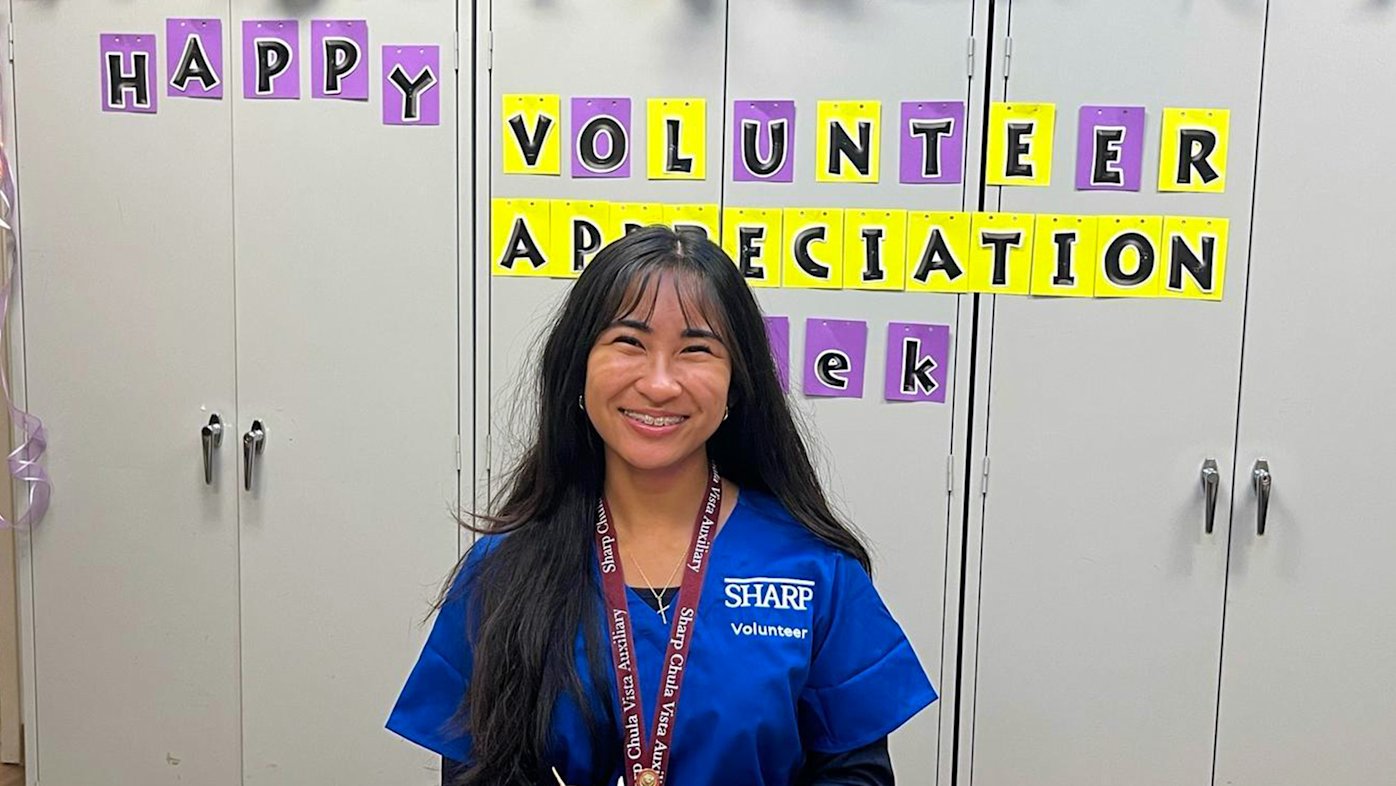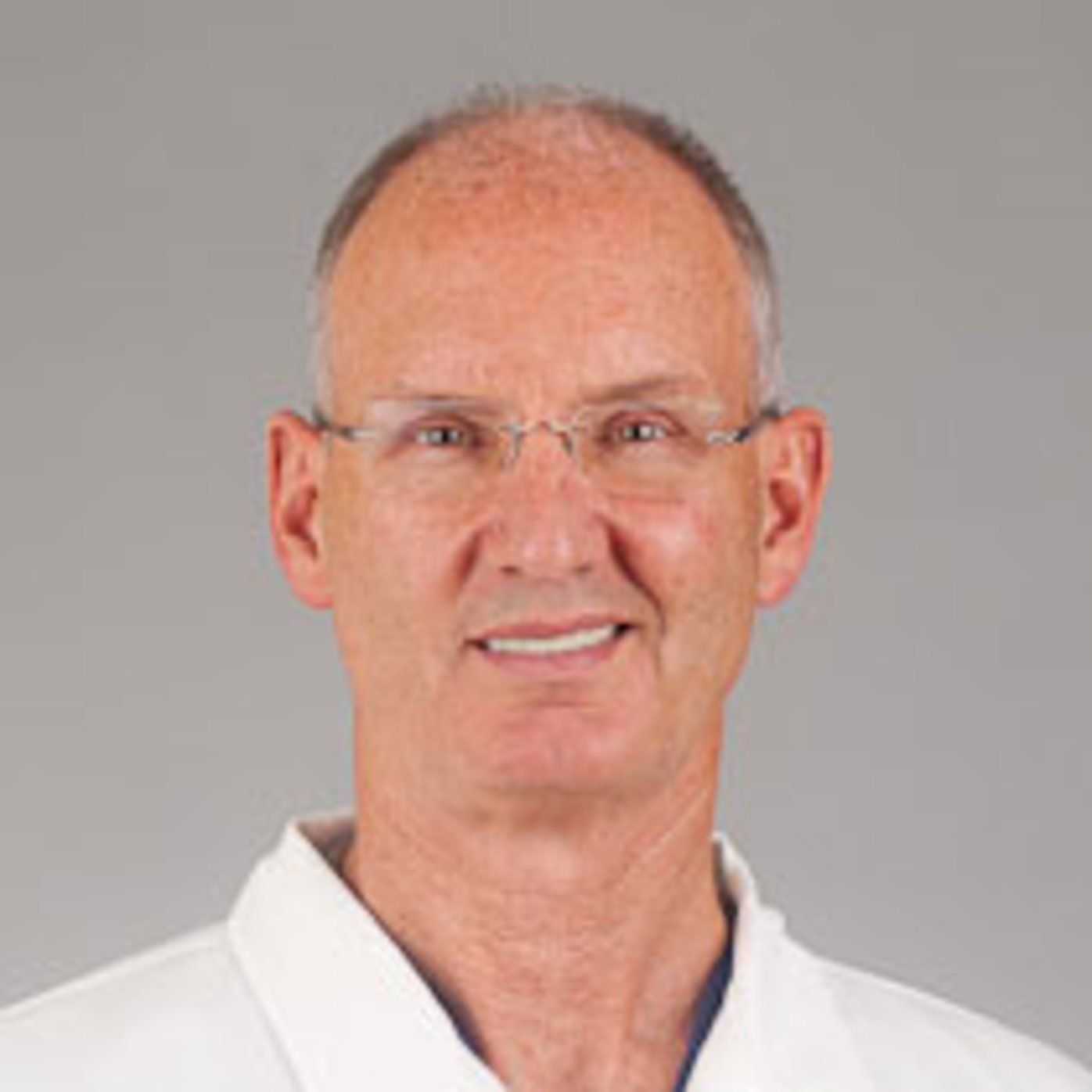
Student volunteer brings joy with wishing cranes
Carefully folded origami cranes carry messages of hope and healing, as one teen volunteer helps brighten patients’ days at Sharp Chula Vista Medical Center.
In 2017, Olga Ortiz, then 59 years old, winced in response to a terrible headache. She visited her family care doctor, who thought she may be having a stroke and advised her to go to the emergency room (ER).
Once there, the ER doctors ran tests, including an X-ray. And shortly after, Olga learned she had a neuroendocrine tumor in her lung.
Neuroendocrine tumors (NETs) are cancerous and develop in the body’s neuroendocrine system, which is composed of cells with properties of both nerves and glands. NETs often begin in the gastrointestinal tract or the lungs. Medical professionals estimate that more than 12,000 people in the U.S. have NETs each year.
“When I heard the news, I thought I was done — that my life was over,” says Olga, who worked as a phlebotomist at Sharp for 23 years before retiring. “I had never smoked, and no one in my family has had lung cancer.”
But Olga isn’t alone — the chance that a woman will develop lung cancer in her lifetime is about 1 in 17. This statistic includes both people who smoke and those who don't smoke.
Surgery to address the cancer
To remove the cancerous tumor, Olga had surgery performed by Dr. Robert Adamson, a Sharp Community Medical Group cardiothoracic surgeon affiliated with Sharp Memorial Hospital.
“The surgery went well, and Dr. Adamson did an amazing job,” says Olga. “But I took a long time to recover, and the incisions for the procedure were on my back. I have scars from that surgery.”
Years later, Olga received a magnetic resonance imaging (MRI) and later a computed tomography (CT) scan as part of her once-a-year check-up for her lungs. The CT scan discovered a lung nodule — an abnormal growth that is noncancerous 95% of the time in the general population.
Lung nodules are often small and need specialized procedures to safely determine whether they are cancerous. As such, Olga received a robotic-assisted bronchoscopy from Dr. Anuja Vyas, a Sharp Rees-Stealy Medical Group pulmonary disease doctor affiliated with Sharp Memorial.
Dr. Vyas used the Ion robot to perform the biopsy. The doctor-controlled device consists of a thin tube that goes through the patient’s mouth, past their throat and into their lungs so that a doctor can take samples from the lung. The technology helps the doctor access hard-to-reach areas with great precision.
“A robotic-assisted bronchoscopy was incredibly helpful in Ms. Ortiz’s case, since her nodule was very small — roughly the size of a pea — and close to her heart,” says Dr. Vyas. “Exams like these can be lifesaving, as they can detect cancer early before it has a chance to spread.”
An innovative way to treat cancer
The exam found that Olga’s cancer had returned. On January 9, 2024, Olga had surgery to remove a lobe (section) of her lung with three cancerous tumors. This time, however, Olga was able to benefit from a robotic-assisted surgery performed by Dr. Craig Larson, a Sharp Community Medical Group cardiothoracic surgeon affiliated with Sharp Memorial.
Dr. Larson was able to perform a minimally invasive surgery using the da Vinci robot, a technology that enables surgeons to view ten times more than the naked eye and make tiny, precise cuts. A surgeon sits at the da Vinci system console and uses its instruments to perform surgery.
Olga was incredibly pleased with the results. She says she would definitely recommend the robotic-assisted surgery to eligible patients.
“Within a week and a half, I was walking to the mailbox at my house with my sons’ help,” says Olga. “Thanks to the robotic-assisted surgery, my recovery was a lot faster than when I had surgery seven years ago.”
According to Dr. Larson, he and his colleagues at Sharp feel fortunate to offer minimally invasive surgery using the da Vinci device. “The tiny cuts allow for less scaring, and many patients such as Olga experience less pain when recuperating,” he says.
An easy recovery and bright future
Because the cancer had not spread outside of Olga’s lung,she did not need to receive chemotherapy, radiation or hormone therapy. In March, Olga visited Dr. Larson for a check-up and was delighted to hear that her recovery was going well.
“A friend told me she wouldn’t have known that I had surgery for cancer unless I had said something,” says Olga. “I’m really grateful for my Sharp care team, who has taken care of me twice for my cancer.”
A month after her surgery, Olga celebrated her retirement from Sharp with her colleagues. She was touched to see her coworkers’ care and excitement for her.
“I’ve worked for Sharp Memorial, Sharp Mary Birch, Sharp Mesa Vista and Sharp Grossmont — all of which have been wonderful,” says Olga. “I also have three family members who have worked or still work at Sharp, and they all have enjoyed their experience.”
After a recent moved to Austin, Olga now looks forward to working again and may get a part-time job.
“Although I’m retired, I don’t think I can keep still for a while,” she says. “Life is precious, and I’m excited to keep living mine.”
Learn more about the Heart and Lung Clinic at Sharp Memorial Hospital; get the latest health and wellness news, trends and patient stories from Sharp Health News; and subscribe to our weekly newsletter by clicking the "Sign up" link below.

The Sharp Health News Team are content authors who write and produce stories about Sharp HealthCare and its hospitals, clinics, medical groups and health plan.

Dr. Robert Adamson is a cardiothoracic surgeon with Sharp Community Medical Group and affiliated with Sharp Memorial Hospital.
Our weekly email brings you the latest health tips, recipes and stories.